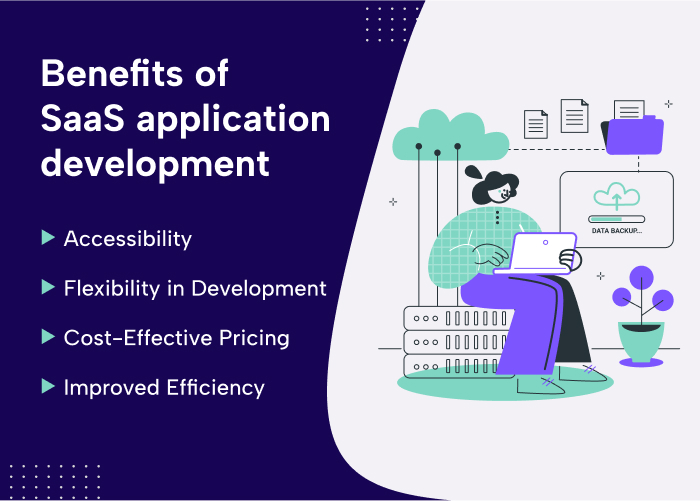Process of SaaS application development

SaaS application development involves several key steps to ensure its successful creation, deployment, and ongoing maintenance. An outline of the procedure is as follows:
Market Research and Idea Validation
- Determine the demands and pain points of your target market.
- To evaluate the competition and pinpoint opportunities, do market research.
- Surveys and user input from prospective customers might help validate your SaaS proposal.
Define Requirements and Planning
- Determine your SaaS application’s essential features and functionalities using user input and market research.
- Make a thorough project plan that includes the resources, budget, schedule, and scope of the work that has to be done.
- Determine the infrastructure and technological stack required to support your SaaS application.
Design and Prototyping
- Give usability and simple navigation a priority when designing your SaaS application’s user interface (UI) and user experience (UX).
- To envision the application’s functionality, layout, and interactions, create wireframes or prototypes.
- Consult with stakeholders to get their opinions, then make design revisions based on those comments.
Development
- Implementing the backend infrastructure, which includes servers, databases, and APIs, is the first step in the development process.
- Utilizing the proper web development tools, create the application’s frontend components.
- Implement the SaaS application’s primary features and functionalities following the established specifications.
- Throughout the development process, adhere to the best standards for coding, documentation, version control, and testing.
Testing and Quality Assurance
- To make sure the application is dependable, performant, and secure, conduct a variety of tests, such as unit, integration, and user acceptability testing (UAT).
- Find and address any defects or problems found during testing.
- In order to verify the user experience and make the required adjustments, do usability testing.
Deployment and Launch
- Assemble databases, configure servers, and make sure the system is reliable and scalable before deploying it.
- Install the SaaS application in a live environment utilizing cloud hosting providers or your own infrastructure.
- Keep an eye on the deployment procedure and take care of any problems that crop up during launch.
Post-Launch Activities
- Monitor the performance and usage metrics of your SaaS application using analytics tools.
- Gather feedback from users and iterate on the application based on their suggestions and requests.
- Provide ongoing support and maintenance, including bug fixes, security updates, and feature enhancements.
- Continuously improve and evolve your SaaS application based on market trends, technological advancements, and user feedback.
Benefits of SaaS application development
SaaS development offers a multitude of benefits for both businesses and end-users. Here are some of the key advantages:
- Accessibility: SaaS applications are typically hosted in the cloud, allowing users to access them from any internet-connected device, regardless of their location. This accessibility ensures flexibility and convenience, enabling users to work remotely or on the go.
- Flexibility in Development: With SaaS, you can quickly adapt to changing demands without having to wait for software upgrades. It makes access possible from any location with an internet connection and does away with the need for additional devices.
- Cost-Effective Pricing: SaaS models allow organizations to start small and grow thanks to their range of price levels. By customizing features for subscription plans, consumer demands may be reasonably satisfied. With monthly subscription fees or yearly payments, predictable revenue Software as a Service offers more consistent sales and profit projections.
- Improved Efficiency: As opposed to conventional software, which might experience delays, SaaS applications run on centralized servers, guaranteeing smooth user-system interactions and rapid response times.
Conclusion
Developing a Software as a Service (SaaS) application requires careful planning, diligent execution, and ongoing iteration to create a successful product that meets the needs of users and delivers value to customers. Throughout this ultimate guide, we’ve covered the key steps and considerations involved in SaaS development, from market research and idea validation to deployment and post-launch activities.
FAQs
How long does it take to develop a SaaS application?
What technologies are commonly used in SaaS development?
How do I monetize my SaaS application?
What security measures should I implement in my SaaS application?
How do I scale my SaaS application as it grows?
Ravi Bhojani is the Chief Marketing Officer (CMO) at Alian Software, where he spearheads the company’s marketing strategies and drives its brand presence in the competitive IT services landscape. With over a decade of experience in the technology and marketing sectors, Ravi has consistently demonstrated his ability to blend innovative marketing techniques with deep industry knowledge to deliver outstanding results.